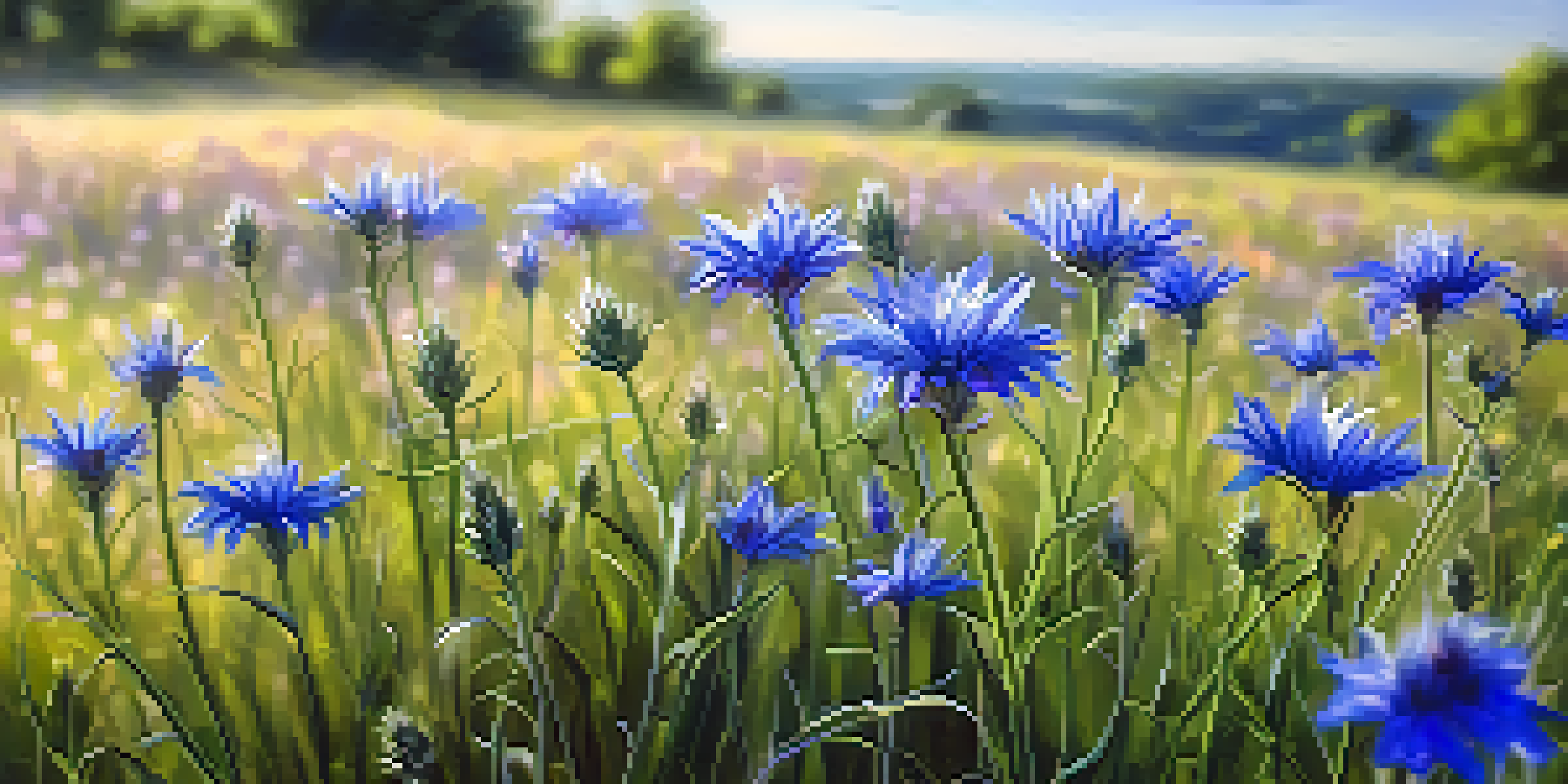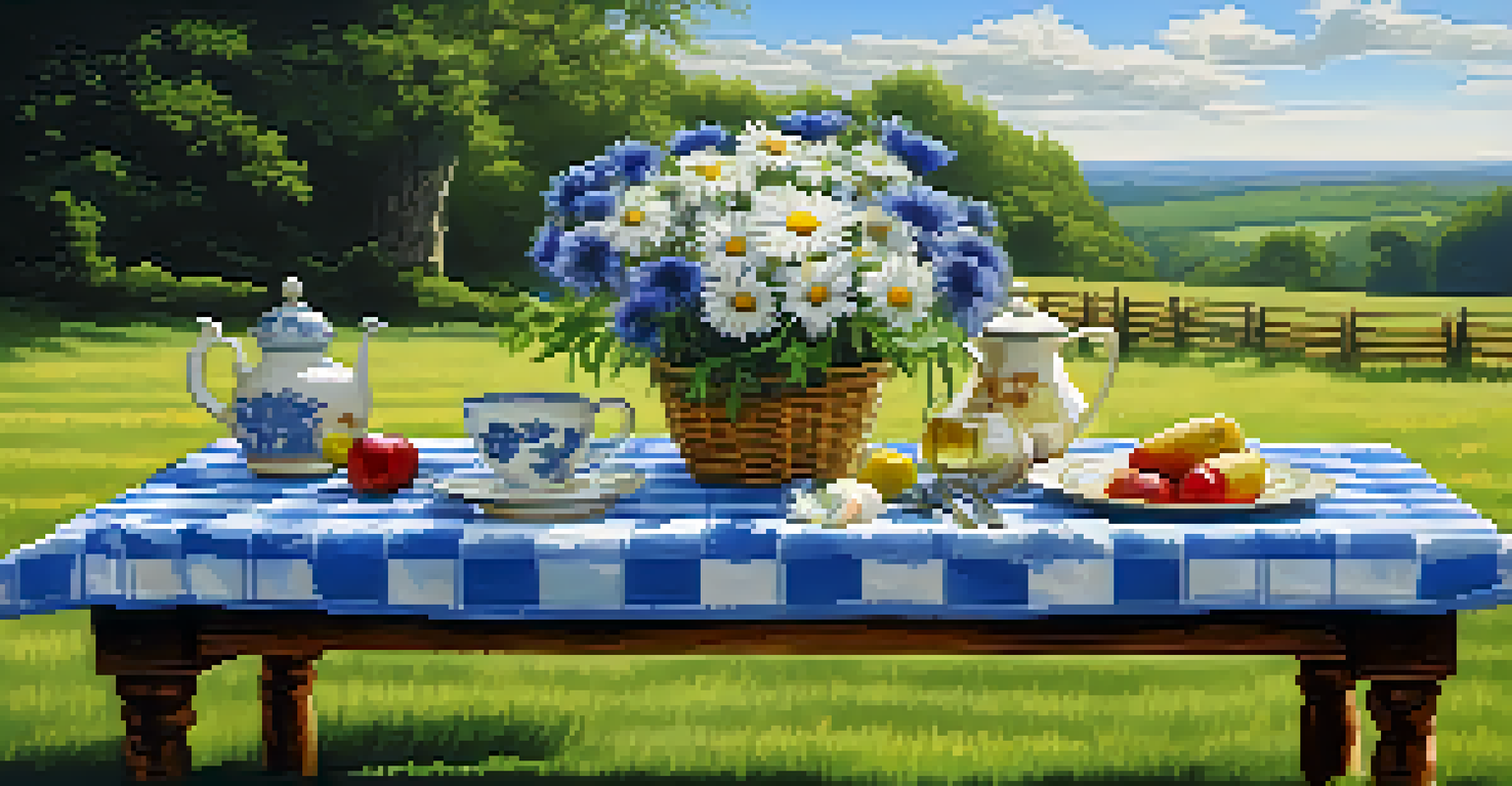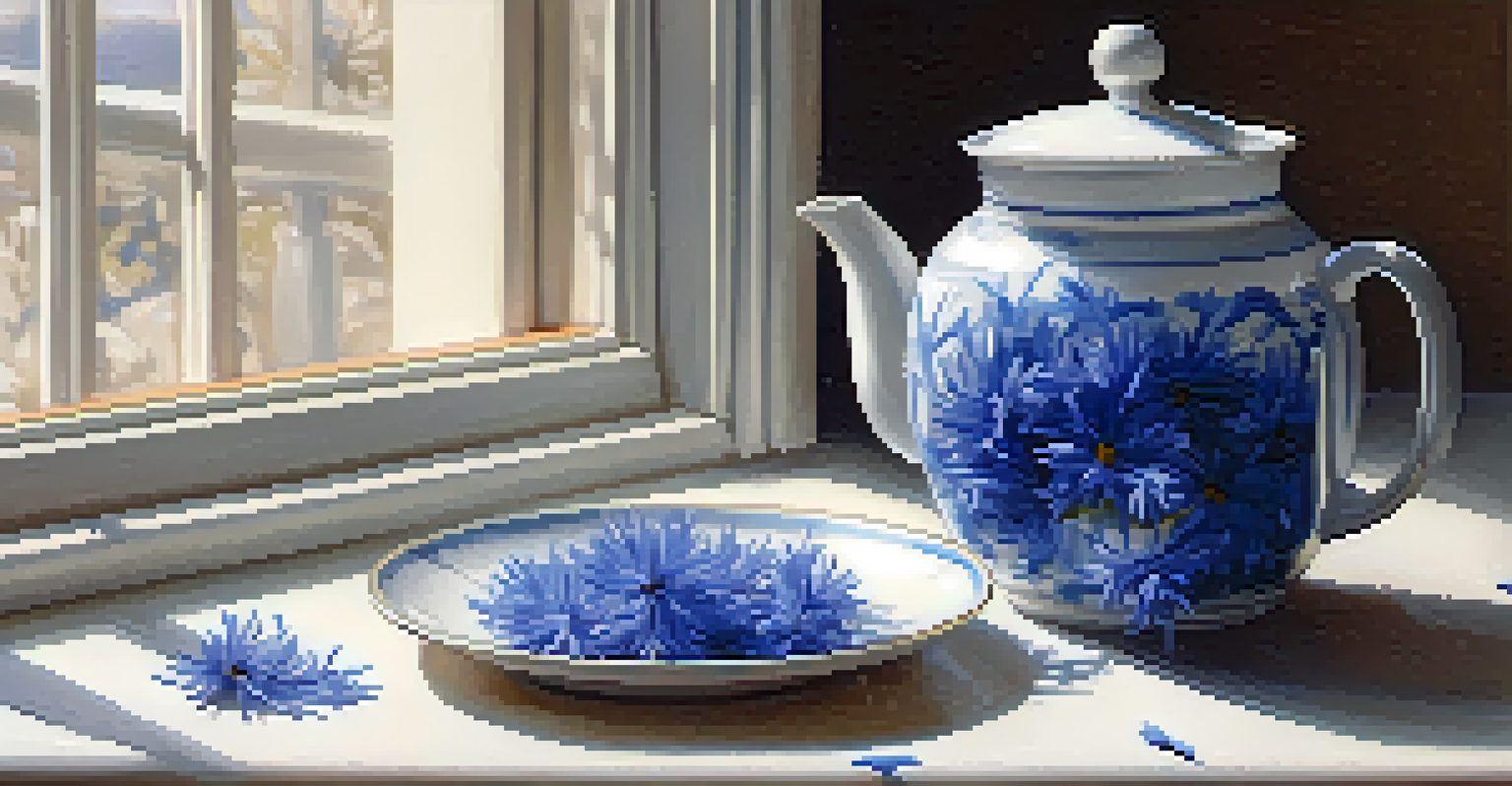The Cultural Significance of the Cornflower in Mythology

The Cornflower: A Symbol of Love and Devotion
In various cultures, the cornflower has been celebrated as a symbol of love and fidelity. Its vibrant blue hue reminds us of clear skies and loyalty, making it a cherished flower in romantic contexts. For instance, in German folklore, a young man would give a cornflower to his beloved as a token of his unwavering love.
Flowers are the music of the ground. From earth's lips, they speak the language of beauty.
Beyond love, the cornflower also represents the idea of devotion. In some traditions, it was believed that wearing a cornflower would ensure faithfulness in relationships. This connection to loyalty can still be seen in modern floral arrangements, where cornflowers often make an appearance at weddings and anniversaries.
Thus, the cornflower's role as a symbol of love and devotion has transcended time, making it a flower that resonates deeply with many people. Its beauty and meaning continue to inspire romantic gestures and heartfelt expressions across cultures.
Cornflower in Ancient Myths and Legends
The cornflower has found its way into various myths and legends, enhancing its mystical allure. In Greek mythology, it was often associated with the goddess Demeter, who represented the harvest and the fertility of the earth. The flower's blooming in fields signified abundance, linking it to sustenance and life.

Similarly, in Slavic folklore, the cornflower is linked to the idea of magical protection. It was believed that hanging cornflowers in one’s home would ward off evil spirits. This connection to protection showcases how the cornflower transcends mere beauty to embody deeper cultural meanings.
Cornflower: Love and Fidelity Symbol
The cornflower is celebrated across cultures as a symbol of love and fidelity, often appearing in romantic gestures and floral arrangements.
These ancient tales contribute to the cornflower's rich tapestry of cultural significance. The flower serves as a reminder of humanity's connection to nature and the stories we weave around the natural world.
Culinary Uses of the Cornflower in Folklore
Beyond its symbolic meanings, the cornflower has also made its mark in culinary traditions. Historically, the petals of the cornflower were used in cooking for their vibrant color and mild flavor. They were often added to salads and desserts, making dishes visually appealing and inviting.
The earth laughs in flowers.
In some cultures, cornflower-infused teas were believed to have health benefits, promoting digestion and relaxation. This culinary aspect highlights the versatility of the cornflower, extending its significance beyond the realm of flowers and into the kitchen.
By incorporating cornflowers into meals, people have celebrated their beauty and benefitted from their properties. This blend of culinary and cultural appreciation showcases the multifaceted role that the cornflower plays in our lives.
The Cornflower's Role in Art and Literature
Artists and writers have long drawn inspiration from the cornflower, using its beauty to evoke emotions and themes. In paintings, the vibrant blue of the cornflower often symbolizes tranquility and peace, making it a favorite subject for many artists. Its delicate nature is beautifully captured in works that celebrate the fleeting moments of life.
Moreover, in literature, cornflowers frequently appear as symbols of hope and resilience. Poets have used the flower to represent the enduring spirit of love and the power of nature. Such references enrich our understanding of the cornflower and its place in cultural narratives.
Culinary and Health Benefits
Beyond symbolism, cornflower petals are used in cooking and herbal teas, adding visual appeal and potential health benefits to various dishes.
Through art and literature, the cornflower continues to inspire creativity, serving as a reminder of nature's beauty and the emotions it can evoke. Its presence in these mediums solidifies its cultural significance across generations.
Modern Interpretations of the Cornflower
In today's world, the cornflower has found new interpretations, particularly in the realms of fashion and home decor. Designers often incorporate cornflower motifs into their collections, celebrating its unique color and delicate form. This modern twist keeps the essence of the cornflower alive while introducing it to new audiences.
Additionally, the cornflower's representation in sustainable practices has gained traction. With a growing emphasis on eco-friendly gardening, more people are cultivating cornflowers in their gardens. This not only promotes biodiversity but also reconnects individuals with the cultural significance of this beautiful flower.
As trends evolve, the cornflower continues to adapt and resonate with contemporary values. Its enduring beauty and meaningful symbolism ensure that it remains a beloved flower in modern culture.
The Cornflower's Connection to National Identity
The cornflower holds a special place in various national identities, serving as a symbol of pride and heritage. For example, in Germany, the cornflower (or 'Kornblume') is recognized as a national flower, representing the country’s agricultural roots and connection to nature. This association fosters a sense of unity among citizens.
Similarly, in Poland, the cornflower is celebrated in folk traditions and is often featured in national celebrations. Its presence in these contexts highlights the flower's role in cultural identity and collective memory. The cornflower becomes more than just a plant; it embodies the spirit of a nation.
Environmental and Cultural Importance
Cornflowers play a crucial role in supporting biodiversity and are recognized in national identities, symbolizing pride and cultural heritage.
These national associations reinforce the cornflower's cultural significance, illustrating how a simple flower can evoke feelings of pride, belonging, and connection to one's heritage.
Environmental Importance of Cornflowers
Beyond cultural significance, cornflowers play a vital role in the ecosystem. They are known to attract pollinators like bees and butterflies, contributing to the health of local flora and fauna. By planting cornflowers, individuals can help support biodiversity and create thriving environments for these essential creatures.
In addition, cornflowers are often used in sustainable agriculture as a natural pest deterrent. Their presence can reduce the need for chemical pesticides, promoting healthier farming practices. This environmental benefit highlights the cornflower's contribution to eco-friendly initiatives.

Thus, the cornflower’s importance extends beyond its beauty and symbolism; it is a crucial player in environmental health. Embracing the cornflower in gardens and landscapes can yield positive impacts on both nature and culture.